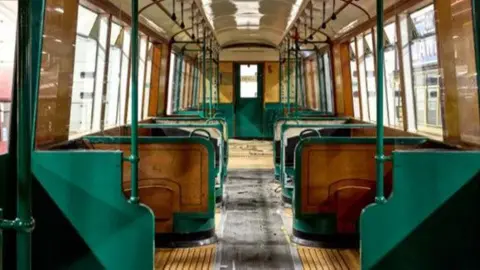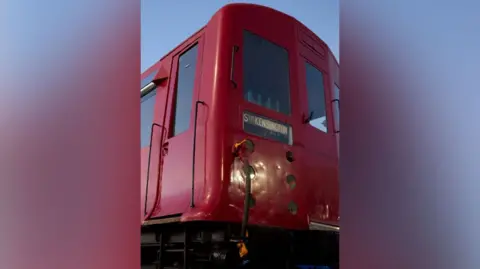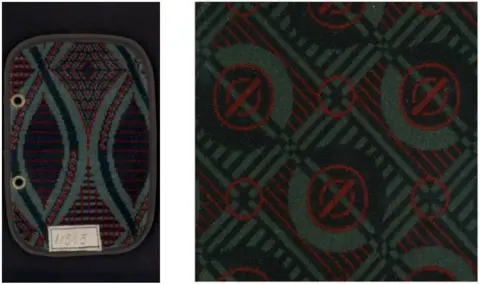Restoration plea for rare District Line carriages
 London Transport Museum collection.
London Transport Museum collection.The London Transport Museum has launched an appeal for funds to help restore some of the last remaining "Q stock" underground carriages, which ran on the District Line from the 1930s to 1970s.
Staff at the museum said the seats require upholstering in "iconic and historical" moquette - a durable, woollen seating material used on public transport.
The restoration project, based at the museum's depot in Acton, west London, aims to get the carriages back up and running and in operational condition.
It is now hoped the public can raise £30,000 to restore the "rare pieces of Underground history".
 London Transport Museum
London Transport MuseumQ stock trains were formed from a combination of cars with different seating designs. Passengers never knew what formation of carriages would pull into their platform.
The London Museum said the three remaining carriages would be refurbished to reflect a different time period in the train's history - and would each have a different seating to design to match.
It said: "One will explore life in wartime London; the second will reflect life during the post-war years of austerity; and the third will illustrate the growing optimism and prosperity" of the 1950s, as well as tell a story of direct recruitment to London Transport from the Caribbean."
To ascertain the correct seating design for each era, the curatorial team have been examining more than 300 historic photographs from 1920 to the present day and the museum's archive of more than 400 moquette samples.
Elizabeth McKay, the director and chief executive of London Transport Museum, said: "These iconic Underground cars wouldn't be complete without distinctive moquette seats, which we know were designed by pioneering women like Joy Jarvis and Enid Marx.
"The Museum has been able to secure funds to reupholster one Q stock car as part of the restoration project, but we need the public's help to raise £30,000 for the final two."
 London Transport Museum collection
London Transport Museum collectionSince the creation of London Transport in 1933, artists and designers have been commissioned to create the moquette patterns for Tube trains, buses, trams, trolleybuses and, more recently, London's cable car over the Thames.
The museum said it was keen to reflect in the designs "the central role" women played in deciding how train and bus interiors would look in the 1940s.
Textile designer Joy Jarvis will be the inspiration for one of the carriages. She was responsible for the iconic 'Roundel' and 'Bullseye' moquette design in the 1940s which, until recently, was erroneously attributed to a male designer.
The artist Enid Marx will be the inspiration for the other carriage. Her green and red "Shield" design appeared on sub-surface trains on the District line towards the end of the Second World War.
Listen to the best of BBC Radio London on Sounds and follow BBC London on Facebook, X and Instagram. Send your story ideas to [email protected]
